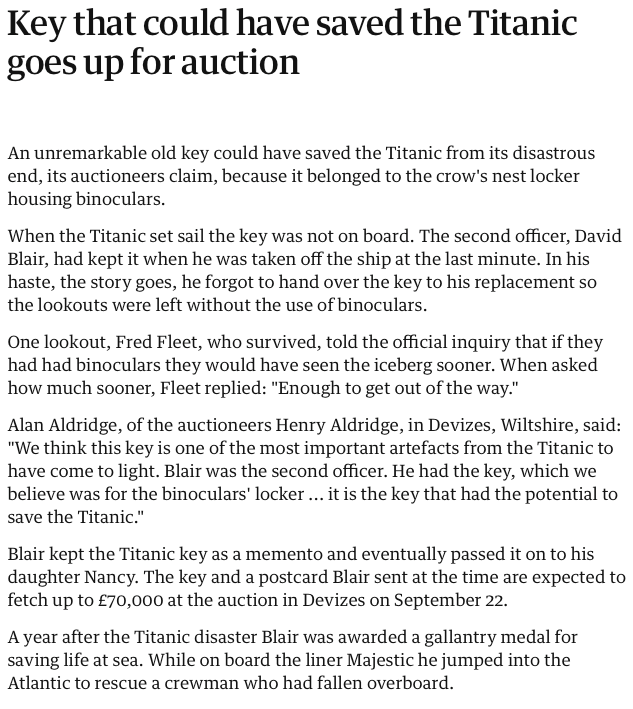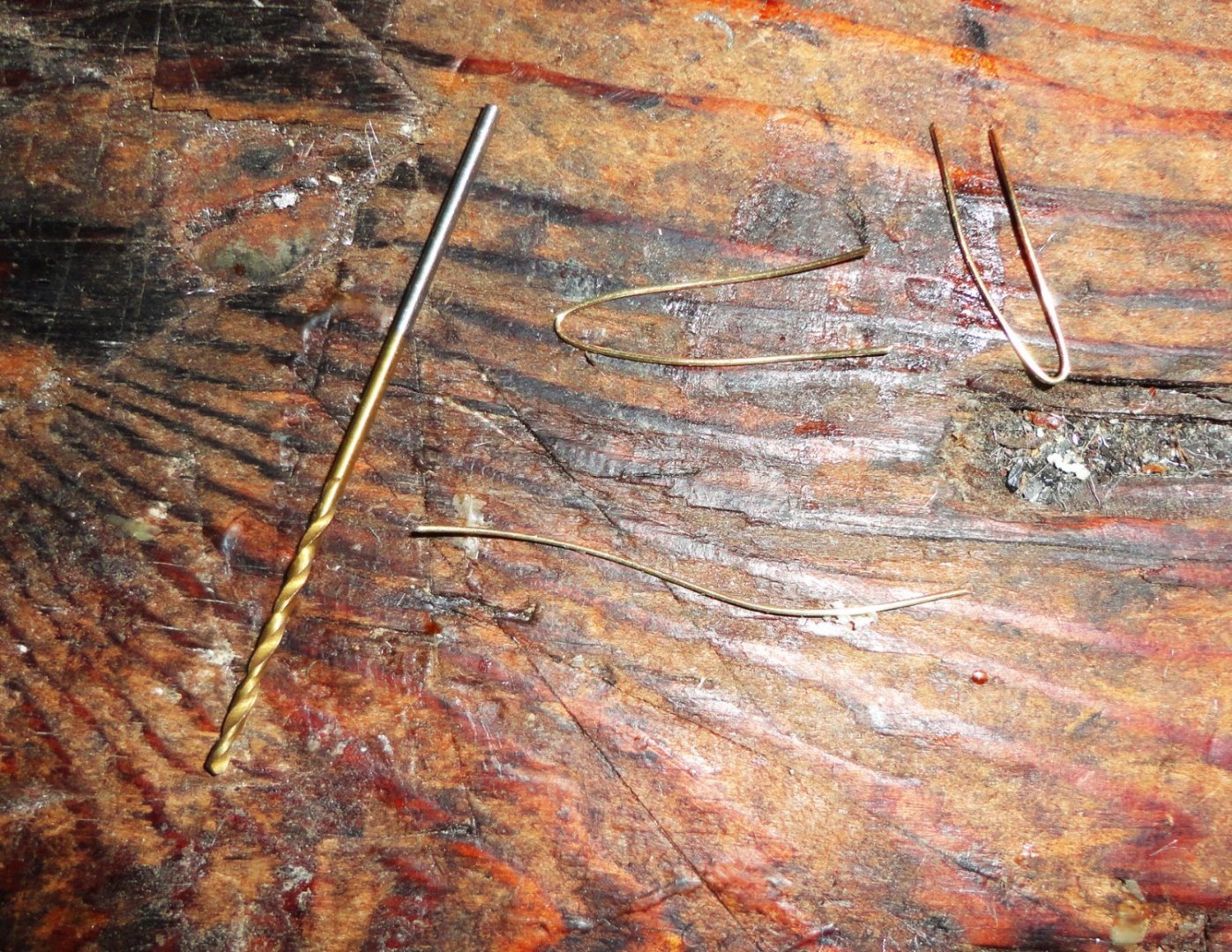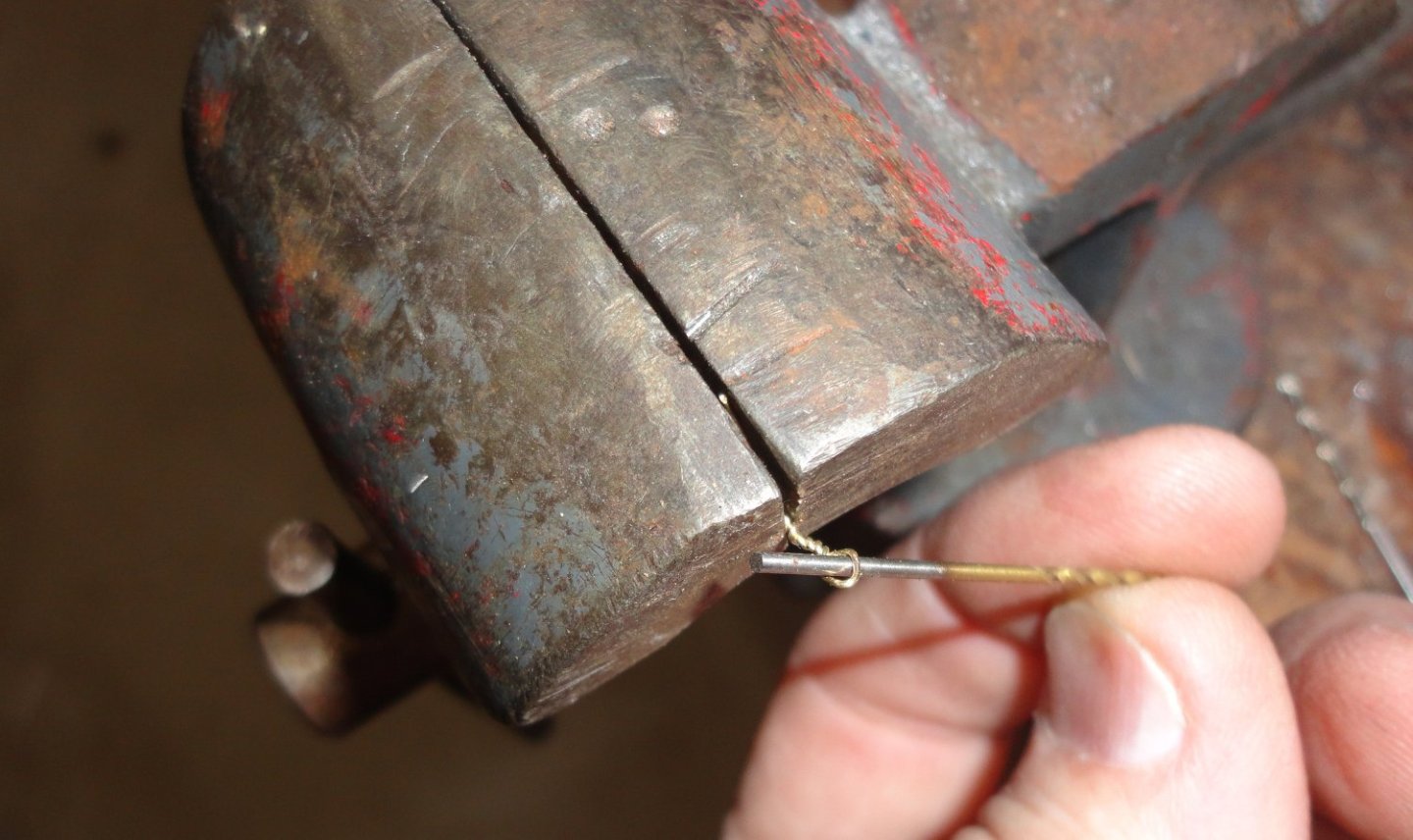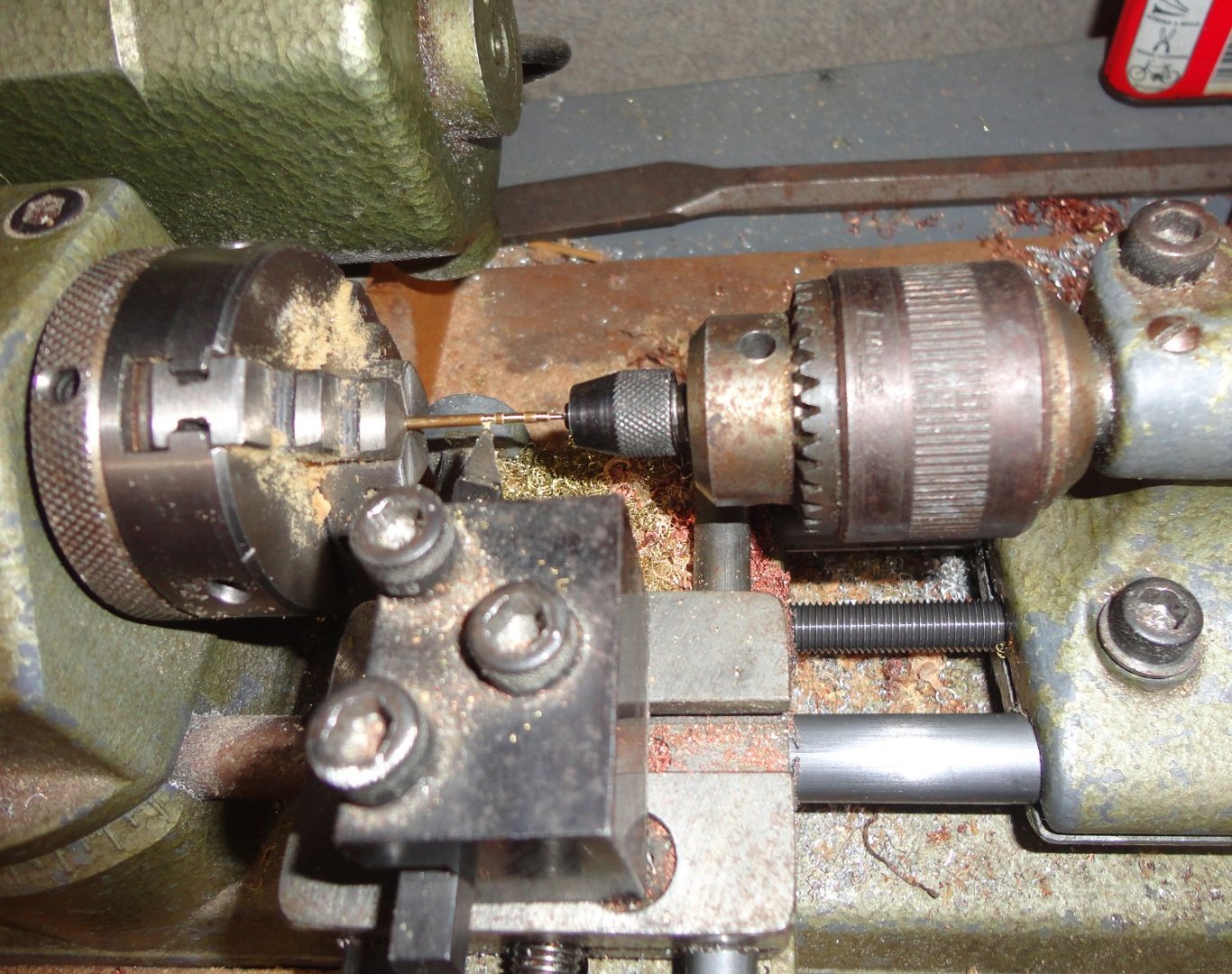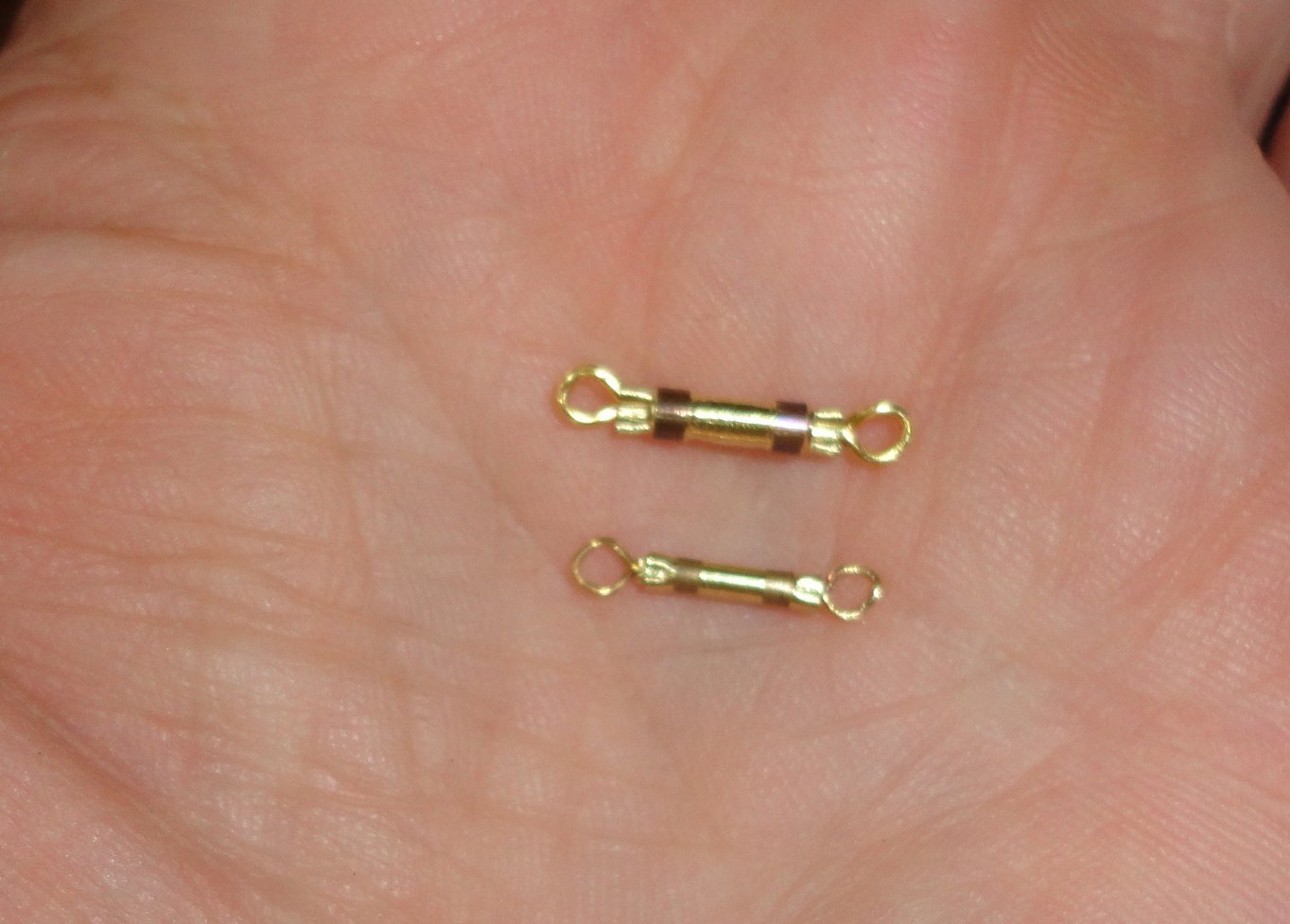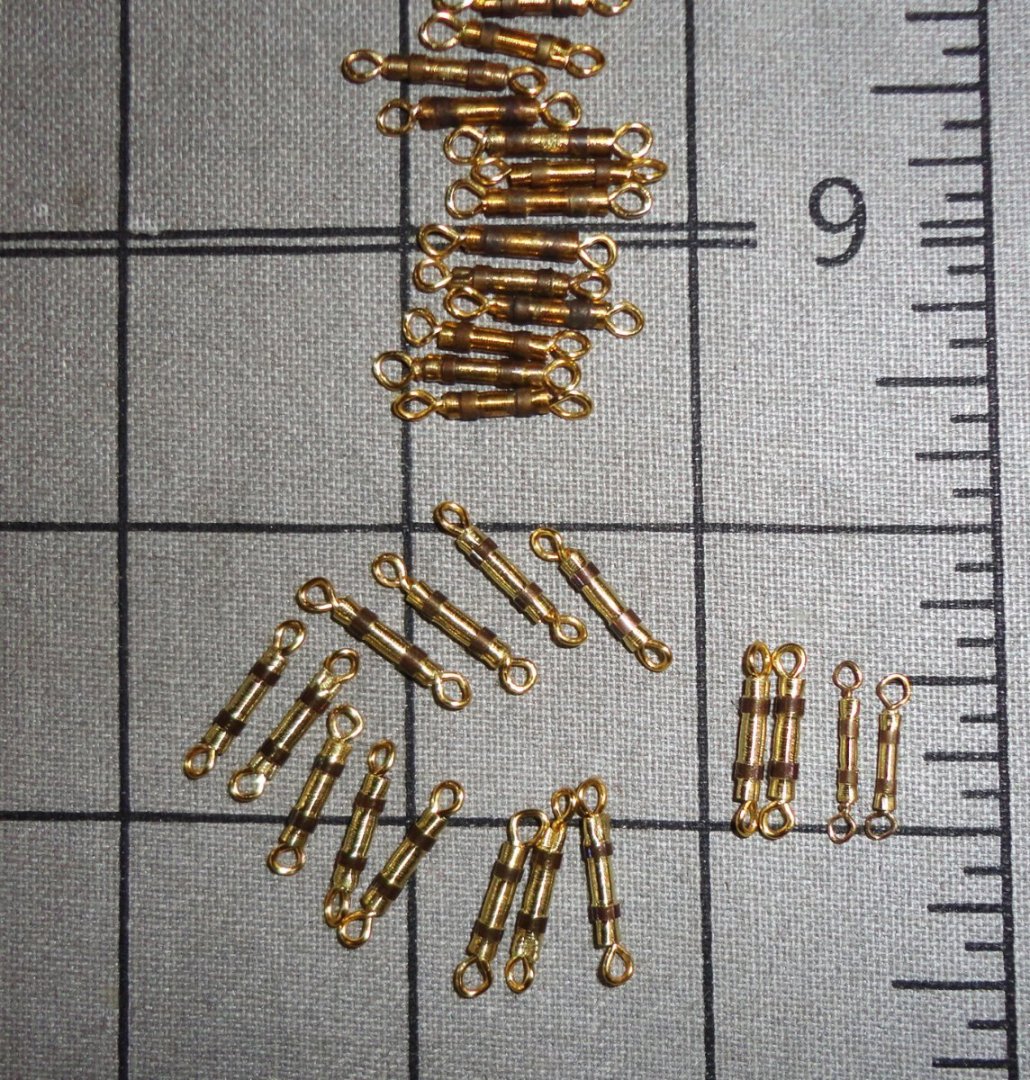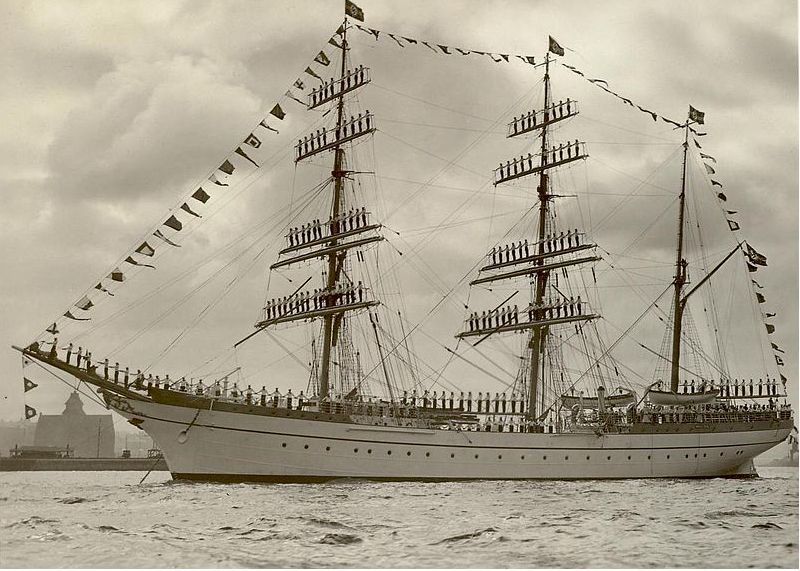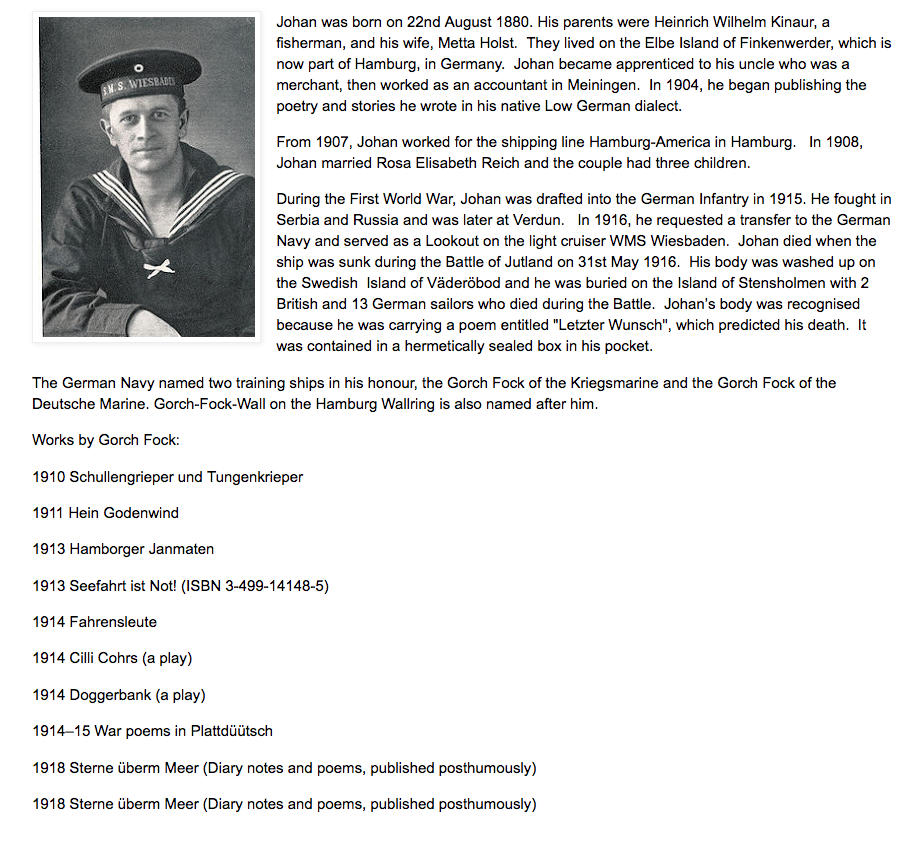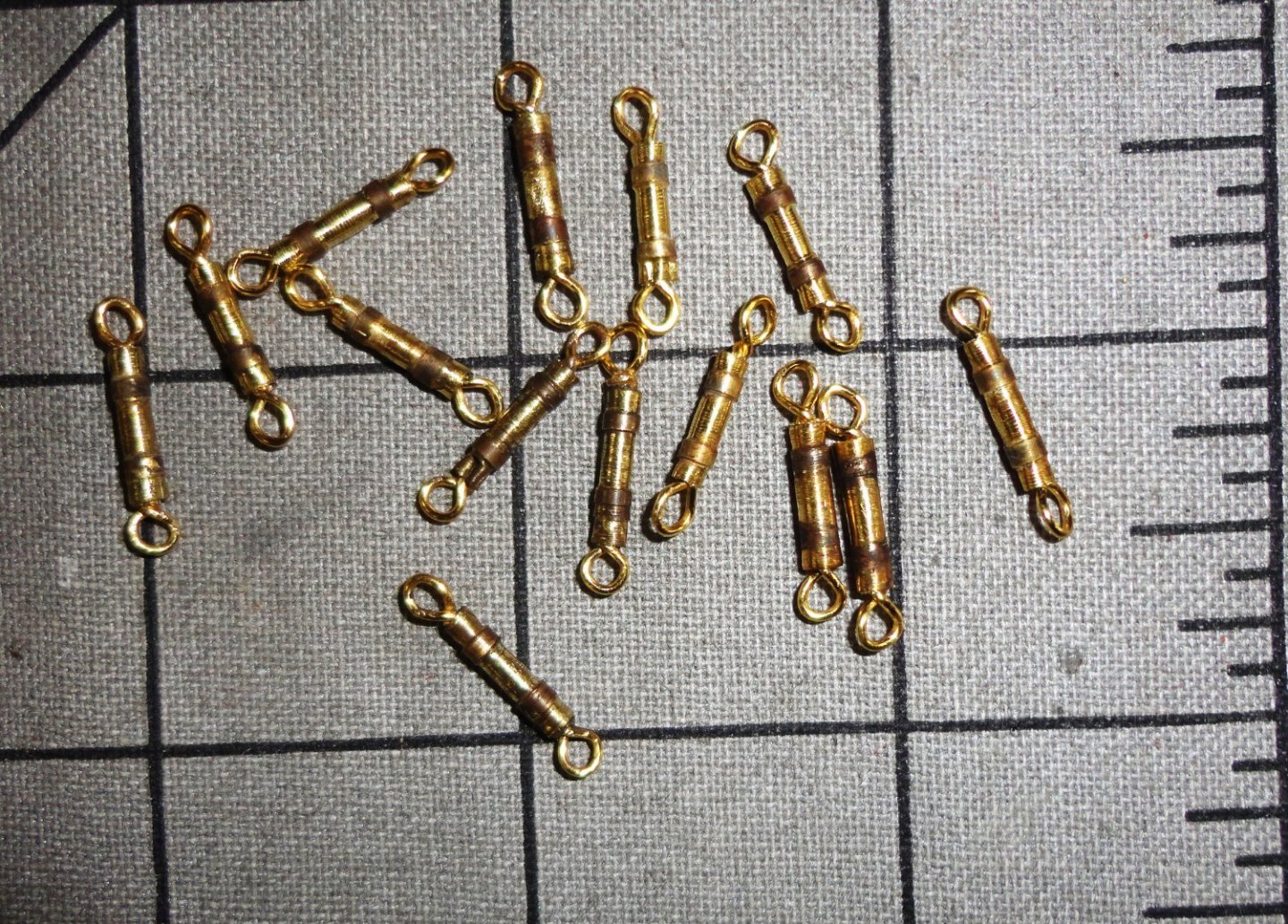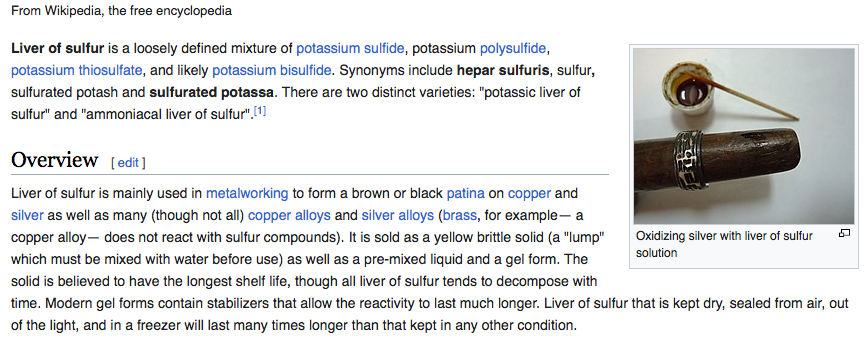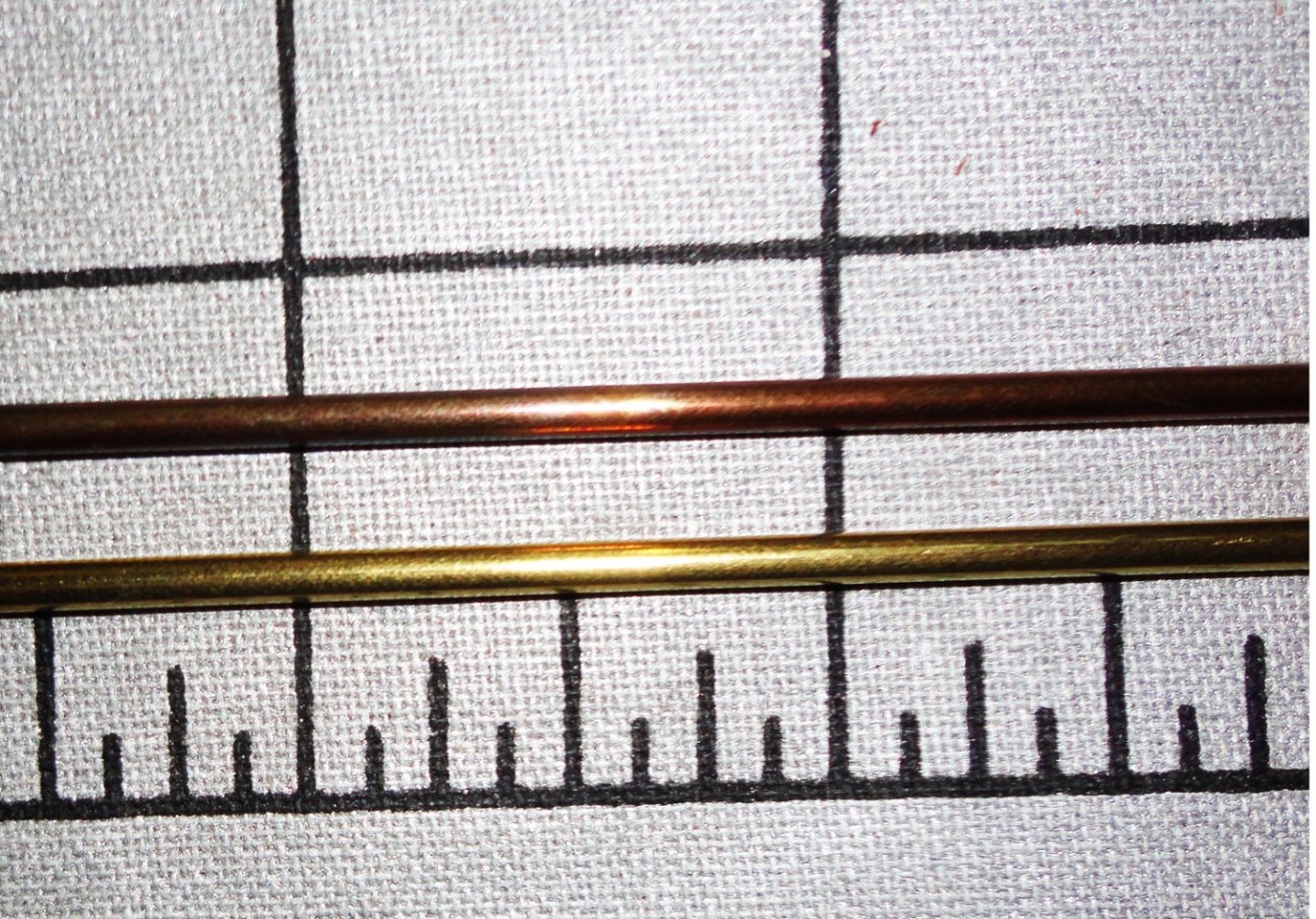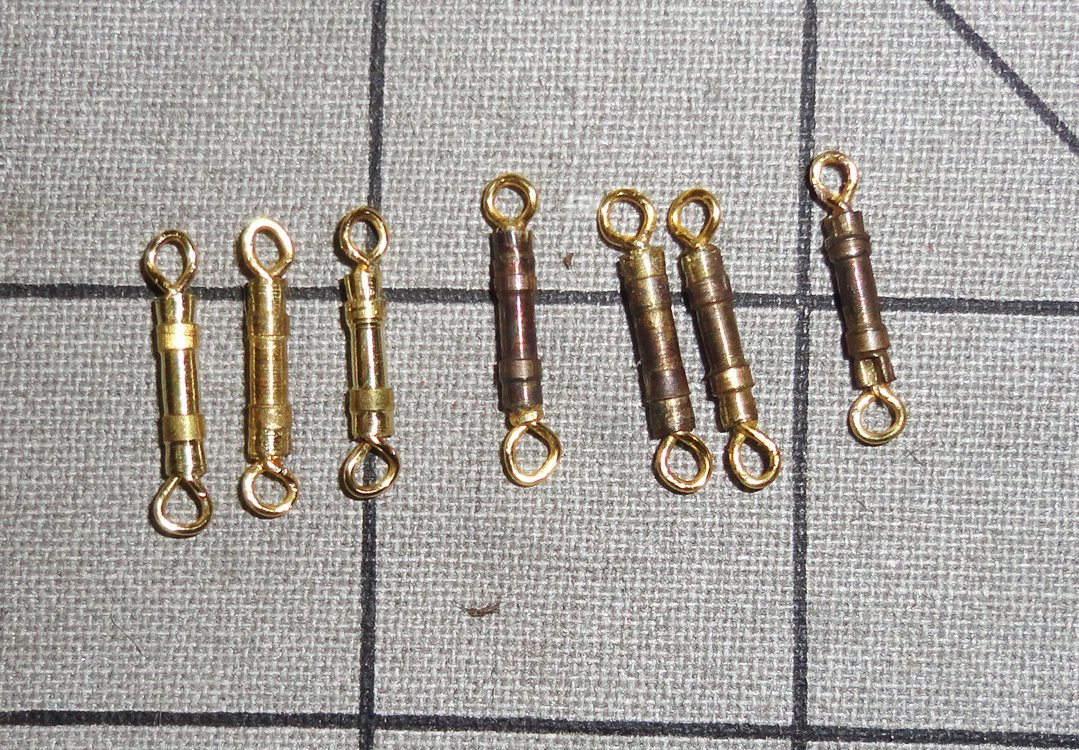-
Posts
1,442 -
Joined
-
Last visited
Content Type
Profiles
Forums
Gallery
Events
Everything posted by Snug Harbor Johnny
-
I see in the historic photo the nice, large lubber hole ... AND that there are fairleads very close to it, so the control lines from above will pass down inside the "shed" between the shrouds coming up and the lines angling down from the lower deadeyes at the perimeter of the top. This permits crew unobstructed passage up the ratlines of the shrouds and onto the ratlines of the futtock shrouds.
-
That may depend on how much filler is on the surface, and what type of filler it is. Once upon a time a project of mine had filler all over the surface (it was a large model of a B-29 out of reasonably good solid balsa underneath. There were a couple area where it was thick and the filler flaked off in places and had to be repaired before painting. After painting, the layer of paint may have stabilized things as there were no more flaking. 'Seems that a clear coat sealer might do the same thing. Then the planking (pre-bent where needed) should stick with aliphatic resin (e.g. Titebond), and will also bond along the edges plank-to-plank. Light sanding will remove any unevenness and glue 'squeeze out' that may occur in the process of final planking.
-
'Just saw this and it gives one pause to think ... what if ? And if I was the officer later assigned to manage the lookouts, I'd have ordered a mechanic to break open the locker to get at the binoculars. Especially if the ship's safety were involved, it would be easier to ask pardon than permission.
-

Charles W. Morgan Whaling Bark Kit
Snug Harbor Johnny replied to Frank Burroughs's topic in Plastic model kits
Most definitely - so one does not have to deal with excess flash or more 'rubbery' plastic to boot. -
Super job to date - especially pre-lining the bulwarks with thin planking ... another opportunity seized.
-
I'd put a backing piece of thin wood on the inside (with a little Saran Wrap between it and the planks so there can be no accidental gluing) held in place with a couple clamps ... use two horizontal strips on the outside to prevent the clamps from denting the outside of the planking. Then cut a piece of patching plank from the same wood as the planking ... having a card-stock template (made with trial fittings) can help, then by lightly tracing around the card stock with a mechanical pencil will give you a slightly oversized patch that you can shave where needed. It should be still be sung before gluing. Use blue 'painters tape' to mask around the edges of the planking already in place to prevent glue slops. (That can also be done on the inside before step one as an added precaution.) Sparingly put glue on the edges of the patch and the planks, and that will act as a 'lubricant' to ease the snug patch in place ... use Titebond or equivalent aliphatic resin wood glue. If needed due to the shape of the area, place Saran wrap over the patch before the glue 'grabs', cover with another piece of thin wood, then clamp as needed - the wood 'outer sandwich' inside and out will prevent denting from the clamps. Do not use too much clamping pressure, or excess force can 'telegraph' through the protective wood and affect the planking beneath. Give it a couple hours at least ... half a day is better - what's the rush? Then undo everything, and you should be able to LIGHTLY sand the area with very fine sandpaper and a little closed-cell foam in back of the sandpaper. Everything should blend well enough - of course there will be evidence of a join - but repairs were not uncommon on wooden boats.
-
The print-on-demand Boy's Manual of Seamanship and Gunnery (2nd ed. 1871) finally arrived from India, and it is mostly text - with only a few illustrations ... definitely not the source of rigging detail I'd hoped for, but can be of interest to some. One illustration depicts a temporary repair of a shroud (when shot away), where a pair of small deadeyes 'always kept fitted' have the tail from each spirally wound up then down the parted shroud - which is then tightened with the lacings through the deadeyes. A wide variety of activities are covered including (aside from general seamanship); gunnery exercises, musketry, Snyder rifle drill, Naval cutlass exercise plus rules and regulations. Perhaps good for some reading on a rainy or winter day as a break from doing anything else. Right now, lawn tractor maintenance calls (having run errands for the Admiral earlier). Perhaps this week I'll be allowed to retire to the shipyard some.
-

Adding a design to a sail
Snug Harbor Johnny replied to Seamus107's topic in Masting, rigging and sails
Steven, Your Great Harry (in my opinion) ranks as one of most interesting builds on MSW - a fine job at a difficult scale (although there are some tiny marvels done by those with an 'elite' level of skill I can only dream about). My Henry project is on hold while I learn rigging skills on the Gorch Fock 1 restoration, but I intend to post drawings of the frame pieces on gridded stock for anyone wanting a 'starting point' to do GH. -
After some practice, the technique for making the turnbuckles was improved - and cutting them from pre-browned tubing makes for a nicer fitting. They're still a tad large for units aloft, so I went back to a Hobby Lobby for more stock and found a smaller size to try. Some finer brass wire was also bought. The eyes are made from 1 1/2" lengths bent around a fine drill bit as a starting point. This is a method seen elsewhere on MSW, but I'm picturing it here. Step 2 is to clamp in a vise and twist with the drill (prior to trimming off the end bits after forming). Turning smaller turnbuckle bodies is at about the limit in small size doable with my rig due to springiness, but I suppose smaller belaying pins might be done from rod held close to the chuck and cut with a form tool. 26 gauge wire was used for the eyes (versus 22 gauge for the larger turnbuckles), because the through hole in the 1/16" O.D. tubing is smaller than the 3/32" O.D. tubing. Below is the first trial part next to the larger version for comparison. Yeah, I'm still 'in the weeds' but plodding on with the prep work. In the photo below, the top group of turnbuckles are the 'learning batch' ... perhaps OK, but I might re-make them to appear uniform with the improved method batch near the bottom. On the lower right are the first pair of thinner fittings next to the larger size to be used to anchor the lower shrouds.
-
You're doing fine ... take all the time you need, which is my own style. I have an early, well-molded version of this kit up on the shelf for some future time (or perhaps to end-up with someone else when I'm gone), and have long thought on what eventual approach could be done with it. The Czech-made laser-engraved wooden deck topper was added to the box, as I've never been happy trying to paint plastic to look like wood - yet some have done pretty well doing just that. And starting with an unbuilt kit does not have the limitations imposed on restoring a previously built model, as you are doing.
- 44 replies
-
- Thermopylae
- Revell
-
(and 3 more)
Tagged with:
-
We've has some splendid weather of late (for August ... I feel sympathy for parts of the country plagued by fire, floods and earthquake - disasters of 'Biblical' proportions), that I've been working a lot outside when not working at the hospital. But the Gorch Fock I (GF1) is still on my mind. A nice photo was found with the crew standing on the yards for show ... brave and steady men. 'Don't know what the signal flags say given that the photo is B&W, German signal flags may differ from other nationalities, and the message would be in German. I can make out the Nazi flags atop the masts. So I looked some to find out more about the ship's namesake, Gorch Fock (a pen name, fock translating as 'jib'). 'Seems he was a playwright and poet who got swept up into WWI, as so many men did to their peril. So many artists, writers, teachers, scientists and men from all walks of life never made it home in that conflict ... and no one knew that even greater devastation lay further in the future. He appears to have been stoic about his conscription, and was steadfast in duty to the end, as were many of all nations involved. Ergo he must have been thought as an example of patriotism, as most nations honor those who die in service. I had a look at just two of his poems and did my own translation of them ... relying on what I can remember from HS and Collegiate (intermediate) German, plus a glossary. Much poetry (in my opinion the best poetry) has both meter and rhyme, and this makes literal translation tricky to do in order to give as much of the 'feeling' of the original into another language. So I gave my best shot. Segle, Hertz, mit allen Winden, Sail on, my heart, with every Wind, wirst nicht deinen Hafen finden. hope not your safe harbor to find. Hafen? Was soll dir der Hafen? Harbor? What harbor's meant to keep? Legst dich nur him zum Schlafen ! Just lay you down and go to sleep ! Segle, Hertz, mit allen Winden. Sail on, my heart, with every Wind. Das erste Kriegergrab am Wegesrand, At a soldier's grave by the road so grand, wir stehen mit der Mussen in der Hand. we stand with our kit and our hats in hand. Ob Freund, ob Feind der Tote, der da liegt, Whether friend or foe, he's dead where he lies, ein Blumenstrauss doch auf den Hugel fliegt. while a flower row up the hillside flies. Im Westen glimmt ein tiefes Abendrot; Off to the West glows a deepening red; wir grussen ernst und feirlich den Tod ! we earnestly, solemnly greet the dead ! Dann heult der Zug und es geht Russlandwarts ... The wailing train will to Russia depart ... Bleibst wie du warst, bleibst tapfer, du mein Herz ! Stay as you were, and be strong, oh my heart !
-
This is a nifty model and yours looks great. I suppose anyone who reads the available MSW builds will note the few challenging spots and be advised of remedial steps before going too far on the project. You are right that the guns look proper now, and sanding a bit of the bottom of the carriages is an effective 'slight of hand' that is virtually invisible on the finished model. I suppose that someone just starting out might 'lower' the level of the deck a tad by trimming the top of the bulkhead forms that the deck will be mounted on - or the needed allowance could be "split" between trimming the deck forms and building the bulwarks slightly higher (thus raising the gun ports just a tad).
- 144 replies
-
- Harriet Lane
- Model Shipways
-
(and 1 more)
Tagged with:
-
The photos you show of various steps are clear and instructive. Thank you. I can see now how drilling fairleads nearer to the lubber hole of the main top will assure that control lines from above will pass behind the point where the main shrouds (heading toward to the lubber hole) cross the lines from the lower deadeyes on the periphery of the top as they head down to the mast below. That way the route up the ratlines will be free of any other lines that might get in the way.
- 431 replies
-
- Flying Fish
- Model Shipways
-
(and 2 more)
Tagged with:
-

Chainplate & Deadeye Assembly Question
Snug Harbor Johnny replied to cardensb's topic in Masting, rigging and sails
A picture can be worth many (if not a thousand) words ... so a view of your components could be facilitative. -
Once more, some pictures new to me ... ferreting out "Getty" branded images (or any others that really are in the public domain - due to prior publication under the old laws - but have been since "copyrighted" by various organizations in possession of them). I have a collection of 'turn of the 20th century' post cards (most of them printed overseas, often Germany) with no copyright information on them (being ephemera at the time) - ergo they were public domain from the moment they hit the streets. YET, I'm seeing the same images on various internet sites where the holder has 'slapped' a so-called 'common law' copyright on the image ... hmmmm, perhaps they imagine that whatever spots, postmarks, folds, tears, etc. make them unique and fair game to anyone who wants to try and claim them as theirs. Yup, I've seen multiples of the same postcard in multiple sites ALL 'claiming' ownership. Not to worry, all one has to do is Photoshop out blemishes, foxing, postmarks, etc. and you have then created your own 'new' image ... and no would-be hoarder can lay claim to it.
-

Technical drawings & Dutch shell first
Snug Harbor Johnny replied to Jules van Beek's topic in Nautical/Naval History
'Chicken v/s Egg'? Chickens are birds, and birds are the living descendants of dinosaurs - ergo dinosaurs existed before birds. Dinosaurs laid eggs, ergo the Egg came before the chicken. Of course chicken tenders and McNuggets have egg in the batter that surrounds them ... -

Roter Löwe 1597 by Ondras71
Snug Harbor Johnny replied to Ondras71's topic in - Build logs for subjects built 1501 - 1750
There's a Gorch Fock in one display case there ... something I'm attempting to restore - estimated age 50 - 70 years. -
I've chauffeured the Admiral to another gem and bead show, and continued to scout out any possible fittings or findings while I was there. Some nice eyes with long shanks were found - to be used as deck eyes that can be pushed far enough into the deck of the solid hull (after pre-drilling slightly undersized holes) so that the tension will be enough to prevent pulling out under the slight tension that might be exerted by new rigging. I looked for what are referred to as 'bar spacers' to use as turnbuckles (as making them one by one is time consuming ... but then is there a shortage of time - other than waiting for the last call to sea?). Nothing was found, and an on-line search (including Fire Mountain - a major supplier) did not turn up anything suitable that was not gold-filled, ergo $$$. So I'm sticking with my present fabrication plan. Completely darkened turnbuckles caused the fine diameter differences turned on them to mostly 'disappear', given the small size and scale. So a small file was used to remove the color from between the collars meant to represent where a spanner would be placed during tension adjustment of a shroud. Uncolored assemblies were colored with fine paint applicators with the reagents in order, and that did darken the bands of those pieces. I happen to like this look better, so when more are turned from pre-darkened tube - the collars will remain dark and the minor diameters will have fresh brass exposed. The turnbuckles might just be painted white, as railings can also be painted white, but as said before, I like the look of brass (which will age gradually and get a patina) and paint often 'gunks up' fine details. A photo of some assemblies is below ... only 74 more to go !
-
Nice staining job. I've used Minwax for a long time, and even the relatively new 'reformulated' version (lower VOCs) gives about the same result. To lessen 'over absorption' (as the grain changes - especially end grain). I've often applied a light amount of colorless pre-stain wood 'conditioner'. This lets the wood 'drink up' some vehicle so that light application of the colored stain goes on without over-coloring. One can always go over the wood again after some drying to darken, but once over-stained you can't lighten it except (perhaps) by sanding. Your rope looks good, and will further enhance your model. Thanks, so much for the great photos and diagrams of the 'Polar' decking. THIS is just the sort of information I've been hoping to see at some point, and will definitely influence anything I do in future on this ship. Also, that's a GREAT capstan ... and I wonder if the maker would be willing to sell some to members of the 'Endurance club'. So far, I've assembled some of the items that might be considered a 'kit enhancement' set that include things like brass 3D stanchions, a two-bladed prop, tiny jackstay eyelets, home-made rope (can always be bought), better deadeyes (of scale size out of walnut), etc.
-
As the soldier hiding behing a plant said on the TV show 'Laugh-in' ... Veeeeery interesting ....
-
I realized that my single point cutting tool (mostly what I've used on brass and aluminum - but a few things in mild steel) was likely dulled, and an examination with a 16x loupe confirmed this. The flat faces were lapped with a little water against a finishing stone and looked at with every few strokes. This improved the point considerably. The point was also a little below 'center' with the length it was extended to, so a brass shim easily corrected this. The result was better cutting (duh). Fooling around with gel CA was redundant because A.) a light lubricant applied to the supporting drill left contaminated (dark) oil inside the workpieces, which had to be cleaned out with a miniature swab before any glue would stick B.) some Ca would still squeeze out during crimping and have to be removed once cured C.) 'Getting the hang' of crimping followed by a pull test using a pin through each eye and pulling well more than a shroud could exert proved that properly crimped eyes in the turnbuckle bodies will not fail ... due to proof testing each one. D.) any glue residue makes it more difficult to darken the brass, unless painting is chosen. The next consideration was how to darken the brass ... and there have been various discussions on how to do this elsewhere in MWS. Some methods take a relatively long exposure, and I thought I'd like to find something with 'quick results'. After fooling around (like some alchemist not knowing what to do) with a variety of things on hand, I stumbled upon something that is good enough for me. There were two agents that were tried separately, with no apparent effects - not even when looked at the next day. But applying one first with the corner of a rag moistened by the agent (wearing disposable nitrile gloves, of course) - then applying the corner of a second rag treated with the second agent ... an immediate chemical 'browning' occurred. I'd liken this to something made of shiny brass that was allowed to slowly take on a brown patina through oxidation - and that can take a long time to occur naturally. The first agent is known as 'Livers of Sulphur', and is used by jewelers, so I suppose can be found on-line. I happened to buy a small plastic bottle of it at a gunsmith shop specializing in 'old time' gunsmithing ... Pennsylvania long rifles, as hunting is a popular sport during an exclusive black powder season in PA, where there are extensive state gamelands set aside for hunters. A description is pasted below: Note they say it does not want to work on brass, which I can confirm by trying it alone. But the second agent is an 'instant' gun blue - also bought at the same gun shop, but is generally common to many gun shops as factory bluing may need re-touching due to abrasion or rust spotting due to delayed or incomplete cleaning after use on the range. Birchwood-Casey is a common brand name, but there are others similarly formulated with phosphoric acid, cupric sulfate and selenious acid ... note that extensive direct contact can result in the absorption of selenium, toxic in excess of the trace amounts found in foods and vitamin supplements (so wear gloves ... but it is swallowing the stuff that can be fatal, duh). Both agents can irritate skin due to acid content, but the nitrile gloves are more than adequate protection, and there were no fumes that I could detect. So rubbing with liver of sulphur (sparingly), then with the instant gun blue produced a quick browning of the brass. The photo below was on the brass tubing stock I'm using to turn the turnbuckle bodies, and the flash of the camera makes the visual comparison less clear, but the untreated tube is bright brass versus a nice brown patinated tube - like one lying around a few years. Below are the few assemblies I've made (not many really, and I'm working on making better eyes and cutting better bodies), all but one of which had CA applied (an unnecessary step per my above comments) before or after assembly ... the ones on the right are patinated while the three on the left are not (for comparison). The one in the center was the last one made and NOT glued ... it seems to have browned the best. The eyes are made of jewelry/beading wire, and must be coated to keep the wire bright over time. I'll have to see if there is a solvent that will take the coating off ... or I'll simply leave them as they are, since a little brass can 'pimp' the model. Actually I've no objection of using brass on a ship model, as those items will eventually get a natural toning.
-
This seems to be a 'rabbit hole' you're peering down, at least from the content of one article that turned up on a casual search: https://alkony.enerla.net/english/the-nexus/miniatures-nexus/miniature-hobby/miniature-size-miniature-scale Last year I build a 1:72 Khufu Solar Barge and had searched for that scale ... and there were not many offerings for ancient Egyptians, but I did find one box that was suitable. A temporarily suspended build of the Great Harry happens to be aprox. 1:88, and 1:87 is nominally HO train gauge. So I looked for 'medieval' sailors in that gauge - again the pickings were sparse (there were a few military figures that might work for medieval soldiers carried on board). So if you are sure of the ship model scale you are (or will be ) making (e.g. 1:48), then it may do to search for that scale and see what comes up.
-
As posted way back a year and a half ago, I test-folded a mock paper sail 'clewed to quarters' as it could then be bunched up to the top of a yard - just to see if 'dog (or mouse) ears' could then hand near the ends of the yard. Now the paper did get thick with all the folding (as opposed to the remarkable thinness of canvas on an actual ship), so a section was cut out of the pre-folded paper to reduce thickness somewhat - then refolded. Sure enough, I thought the result looked OK (the ears could even be smaller and twisted a little to make them look thinner). So can this be a case where one can have the cake and eat it too? That is, one can clew to quarters and still have the ears on the furled sails hanging near the yard ends by pulling the clew outward during the folding process (ergo the clew line would have to be loosened). My test photos follow: Men standing on the foot ropes would pull sections of sail up the front in sequence. The yard below was flipped to the front side.
- 399 replies
-
- cutty sark
- revell
-
(and 2 more)
Tagged with:
About us
Modelshipworld - Advancing Ship Modeling through Research
SSL Secured
Your security is important for us so this Website is SSL-Secured
NRG Mailing Address
Nautical Research Guild
237 South Lincoln Street
Westmont IL, 60559-1917
Model Ship World ® and the MSW logo are Registered Trademarks, and belong to the Nautical Research Guild (United States Patent and Trademark Office: No. 6,929,264 & No. 6,929,274, registered Dec. 20, 2022)
Helpful Links
About the NRG
If you enjoy building ship models that are historically accurate as well as beautiful, then The Nautical Research Guild (NRG) is just right for you.
The Guild is a non-profit educational organization whose mission is to “Advance Ship Modeling Through Research”. We provide support to our members in their efforts to raise the quality of their model ships.
The Nautical Research Guild has published our world-renowned quarterly magazine, The Nautical Research Journal, since 1955. The pages of the Journal are full of articles by accomplished ship modelers who show you how they create those exquisite details on their models, and by maritime historians who show you the correct details to build. The Journal is available in both print and digital editions. Go to the NRG web site (www.thenrg.org) to download a complimentary digital copy of the Journal. The NRG also publishes plan sets, books and compilations of back issues of the Journal and the former Ships in Scale and Model Ship Builder magazines.



